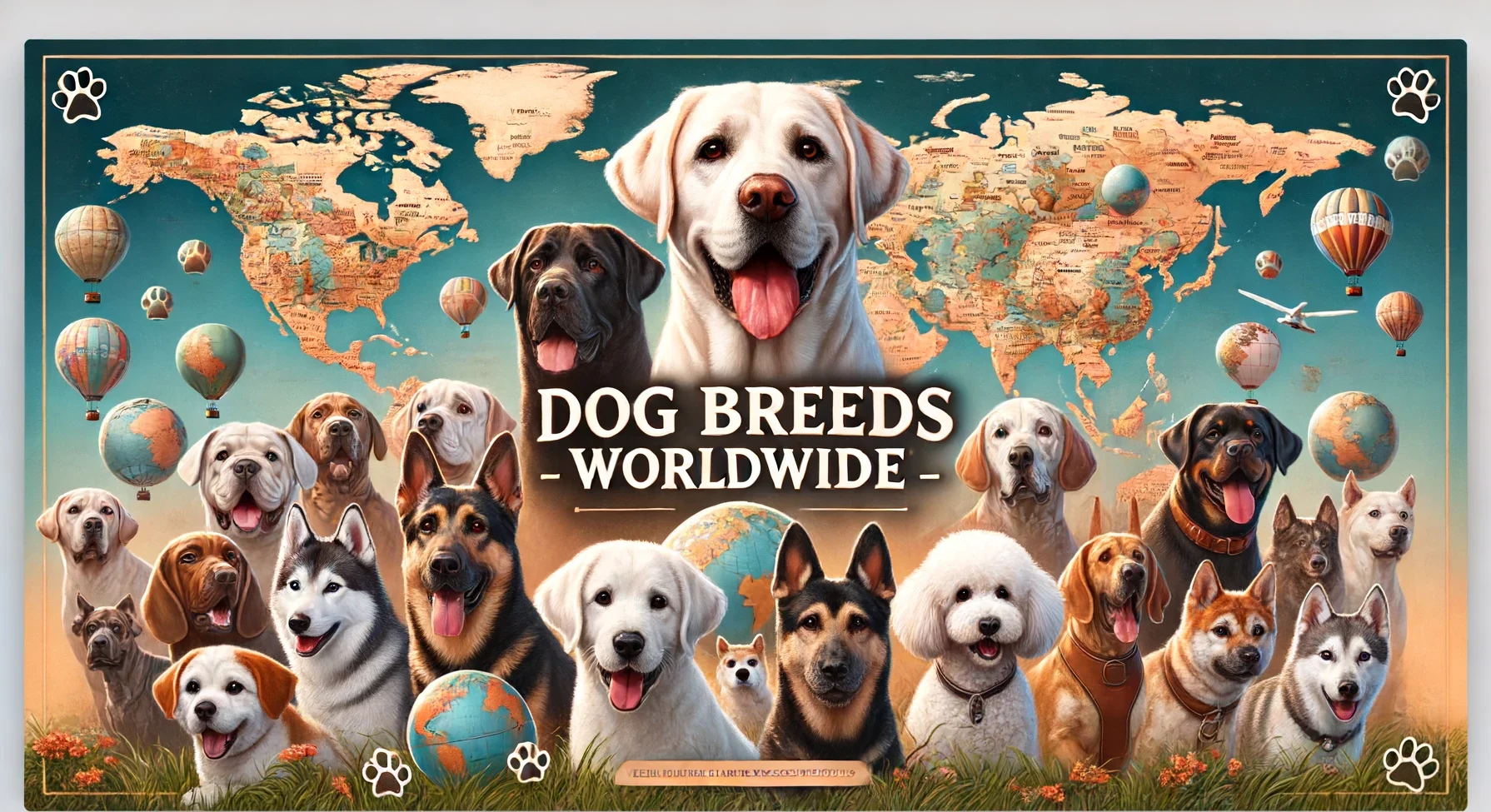As you consider bringing a new furry friend into your family, you may be wondering if a Beagle is the right fit for you. Beagles are compact, gentle, and great with children, making them an excellent choice for families1. With their typical height range of 13 to 16 inches tall at the shoulder and weighing 20 to 30 pounds, Beagles are highly compatible with children and families, making them ideal family pets1. They are also known for their exceptional sense of smell, making them great at locating hidden treats2.
Beagles can live up to 15 years, with some living even longer2, and their size, categorized as a medium-sized breed, allows them to be easily managed and suitable for families with children2. The size of Beagles is typically 13-15 inches tall at the shoulder, weighing 20-30 pounds3. If you’re considering bringing a Beagle into your family, you can expect a friendly and playful companion that will bring joy and excitement to your life.
Key Takeaways
- Beagles are friendly, playful, and great with children, making them an excellent choice for families.
- They are compact, with a typical height range of 13 to 16 inches tall at the shoulder and weighing 20 to 30 pounds1.
- Beagles have a highly developed sense of smell and are known for their exceptional tracking abilities2.
- They are social animals and are less likely to develop separation anxiety when left with other pets2.
- Beagles require regular veterinary check-ups and preventive care due to their predisposition to certain genetic health conditions1.
- Early socialization and positive experiences with other animals can enhance a Beagle’s temperament3.
Introduction to Beagles
Beagles are a popular breed known for their friendly and curious nature, making them a great addition to families4. With their rich history dating back to the 1400s, Beagles were originally bred for hunting small game, utilizing their keen sense of smell and energetic personalities5. As a breed, Beagles have been at the top of popularity charts for decades, with the American Kennel Club (AKC) ranking them as the 6th most popular dog breed in the United States6.
Some key Beagle characteristics include their small to medium size, with adults typically standing 13-15 inches tall and weighing between 20-30 pounds5. They require regular exercise, with at least 1-2 hours of physical activity daily to prevent boredom and destructive behaviors5. Beagles are also known for their distinctive baying howl and are highly social dogs that thrive on interaction with their human family members.
For those interested in learning more about Beagles, here are some key points to consider:
- Beagles have approximately 220 million scent receptors, making them highly skilled at tracking and detecting scents5.
- They are generally healthy dogs but can be prone to genetic conditions such as hip dysplasia, epilepsy, and hypothyroidism5.
- Beagles are highly social and require regular interaction with their human family members to prevent boredom and destructive behaviors4.
Overall, Beagles make great family pets due to their friendly, outgoing nature and relatively small size. With proper care and attention, they can thrive in a variety of living situations, from apartments to homes with yards4.
| Beagle Characteristic | Description |
|---|---|
| Size | 13-15 inches tall, 20-30 pounds |
| Exercise Needs | 1-2 hours daily |
| Scent Receptors | Approximately 220 million |
Physical Characteristics of Beagles

When considering a Beagle breed as a pet, it’s essential to understand their physical characteristics. Beagles come in two size variations, with the smaller variety being no more than 13 inches tall and weighing between 22 and 30 pounds7. The larger variety is between 13 and 15 inches tall and weighs up to 35 pounds7. These size variations are crucial in determining the overall health and well-being of your Beagle puppy.
In terms of coat colors and patterns, Beagles are known for their distinctive tricolor or two-toned coats8. Their coats can be a combination of black, light brown, and white markings, making each Beagle unique. Understanding these physical characteristics can help you better care for your Beagle and ensure they lead a happy and healthy life.
Some key characteristics of Beagles include:
- Height range: 13-15 inches8
- Weight range: 20-35 pounds7
- Coat colors and patterns: tricolor or two-toned8
By understanding these physical characteristics, you can provide the best possible care for your Beagle puppy and ensure they thrive as a beloved member of your family9.
Beagle Temperament and Personality
When it comes to the Beagle temperament and personality, you can expect a friendly and sociable nature, making them a great addition to families10. Beagles are known for being highly playful and energetic, requiring plenty of exercise and stimulation to prevent boredom and destructive behavior10. Their Beagle personality is characterized by a strong desire for companionship and interaction, which is why they thrive in environments where they receive plenty of attention and affection11.
In terms of their energy levels, Beagles need at least 1 hour of activity daily, which can include walks, runs, or playtime in the yard10. This high energy level is a key aspect of the Beagle temperament, and it’s essential to provide them with regular exercise to keep them happy and healthy11. Additionally, Beagles are prone to barking and howling, which can be a challenge for some owners, but with proper training and socialization, they can learn to control their vocalizations10.
Some key characteristics of the Beagle temperament and personality include:
- Outgoing and playful, making them great with children11
- Cheerful and adventurous, always looking for their next excitement11
- Gentle and affectionate, loving nothing more than spending time with their family10
- Social and friendly, getting along well with other dogs and people10
Overall, the Beagle temperament and personality make them an excellent choice for families who are looking for a friendly, energetic, and loving companion10. With proper care, attention, and training, Beagles can thrive and become a beloved member of the family11.
| Characteristics | Description |
|---|---|
| Energy Level | High, requiring at least 1 hour of activity daily10 |
| Temperament | Friendly, sociable, and playful11 |
| Personality | Outgoing, cheerful, gentle, and affectionate10 |
Ideal Family Environment for Beagles

When it comes to creating an ideal family environment for Beagles, it’s essential to consider their compatibility with children and living arrangements. Beagles are highly compatible with children, making them a great choice for families12. They are also relatively adaptable to different living arrangements, including houses and apartments, as long as they receive plenty of exercise and attention13.
Beagles require at least an hour of physical activity each day to maintain their health13. This can include walks, runs, and playtime in the yard. They also need regular Beagle care and Beagle training to prevent boredom and destructive behavior. With proper care and attention, Beagles can thrive in a variety of living situations, making them a great choice for families with or without yards.
Here are some key considerations for creating an ideal family environment for Beagles:
- Provide plenty of exercise and attention
- Consider a house with a yard for plenty of playtime
- Apartment living is also suitable with regular walks and playtime
- Regular Beagle care and Beagle training are essential
By considering these factors and providing the proper care and attention, you can create an ideal family environment for your Beagle. Remember to research and understand the needs of your Beagle, and with the right care and attention, they can become a beloved and integral part of your family12.
| Beagle Care | Beagle Training |
|---|---|
| Regular exercise and attention | Positive reinforcement methods |
| Proper nutrition and diet | Consistency and patience |
Health and Care Considerations for Beagles
As a Beagle owner, it’s essential to be aware of the potential health issues that can affect your pet. Beagles are generally a healthy breed, but they can be prone to certain health issues, including eye problems and hip dysplasia14. Regular veterinary care is crucial to prevent and detect these issues early on. Beagle health and Beagle care are critical aspects of responsible pet ownership.
Some common health issues that can affect Beagles include ear infections, which can be caused by allergies14, and Intervertebral Disc Disease (IVDD), which is a common spinal condition affecting the breed15. Beagles are also at risk for hip dysplasia, with 18.5% of all Beagles tested having abnormal hips15. To prevent these issues, it’s essential to provide your Beagle with regular exercise, a balanced diet, and routine veterinary care.
To ensure your Beagle stays healthy, it’s crucial to provide regular check-ups with a veterinarian. This includes monitoring their weight, as Beagles can be prone to obesity, and providing a balanced diet that meets their nutritional needs. Beagle care also involves regular grooming, including nail trimming, ear cleaning, and brushing, to prevent matting and tangling of their coats.
By being aware of the potential health issues that can affect your Beagle and taking steps to prevent them, you can help your pet live a long and healthy life. With proper Beagle health and Beagle care, your pet can thrive and bring joy and companionship to your family for years to come14.
Training Beagles: Tips and Techniques
When it comes to Beagle training, understanding their behavior is crucial. Beagles are known to be independent, which can make training challenging16. However, with patience, consistency, and positive reinforcement, they can learn to obey commands and behave well. Beagle behavior is highly motivated by food and praise, making reward-based training an effective approach17.
To start training your Beagle, it’s essential to begin early, around 7 to 8 weeks old16. At this age, they can start building behaviors and learning basic commands. Here are some tips for effective Beagle training:
- Keep training sessions short, no more than two sessions per day16
- Use positive reinforcement methods, such as treats and praise, to encourage good behavior17
- Be consistent and patient, as Beagles can be easily distracted16
- Provide regular exercise and mental stimulation to prevent boredom and destructive behavior17
By following these tips and understanding Beagle behavior, you can develop an effective Beagle training plan that meets your dog’s unique needs and personality17. Remember to stay calm, patient, and positive, and you’ll be well on your way to raising a well-behaved and well-adjusted Beagle16.
| Age | Training Milestone |
|---|---|
| 7-8 weeks | Start training |
| 12 weeks | Puppies start connecting learning dots |
| 6 months | Puppies can be close to potty-trained |
Socialization for Beagles
As a Beagle owner, it’s essential to understand the importance of socialization for your pet. Beagle socialization is critical in developing good behavior and preventing anxiety. According to research, Beagle puppies should start socialization as early as 3-4 weeks of age and should be introduced to new experiences by 12-16 weeks old18. This early socialization helps them become confident and calm in new environments and around new people and animals.
There are several activities to enhance social skills in Beagles. For instance, introducing a Beagle puppy to individuals of different ages, sizes, and ethnicities is essential to prevent unnecessary fears or prejudices18. Additionally, regular interactions with vaccinated puppies or gentle adult dogs help Beagle puppies learn doggy manners and canine communication18. Socialization classes provide structured exposure, and statistics indicate that puppies attending classes show increased confidence in unfamiliar settings18.
Some other activities to enhance social skills in Beagles include exposure to diverse environments like parks, busy streets, and cafes18, and familiarization with household sounds like vacuum cleaners and blenders18. It’s also recommended that Beagle puppies have supervised interactions with children to ensure safe and positive learning experiences18. By following these tips and activities, you can help your Beagle develop good behavior and prevent anxiety, leading to a happy and healthy life for your pet.
Remember, Beagle behavior is heavily influenced by socialization, so it’s crucial to start early and be consistent. With patience, love, and proper socialization, your Beagle can become a well-adjusted and well-behaved companion19.
Nutrition and Diet for Beagles
As a Beagle owner, it’s essential to understand the importance of a balanced diet in maintaining your dog’s overall health and well-being. Beagle nutrition and Beagle diet play a crucial role in preventing various health issues. A well-balanced Beagle diet should include the right amount of protein, fat, carbohydrates, and essential vitamins and minerals20. Beagles require a diet rich in protein, with about 25% protein in their diet, and a recommended fat content of between 5% and 10%20.
When it comes to choosing the right dog food for your Beagle, consider a high-quality commercial dog food that meets their nutritional needs. Beagles are prone to obesity, which can lead to health problems such as diabetes and joint issues; a balanced diet and controlled portions are crucial for weight management21. A diet rich in omega-3 fatty acids, glucosamine, and chondroitin is recommended to support joint health, especially for aging Beagles21.
Here are some key considerations for a Beagle’s diet:
- High-quality protein sources, such as chicken or fish
- Whole grains, such as brown rice or oats
- Vegetables, such as carrots or sweet potatoes
- Fruits, such as apples or blueberries
It’s also essential to consider the life stage of your Beagle when selecting a dog food. Beagle puppies require a nutrient-rich diet to support their growth and development, while adult Beagles require a balanced diet to maintain their overall health20. Senior Beagles require a diet with 18% protein and around 5% fat20.
| Life Stage | Protein Content | Fat Content |
|---|---|---|
| Puppy | 25% | 5-10% |
| Adult | 25% | 5.5% |
| Senior | 18% | 5% |
By providing a balanced and nutritious diet, you can help your Beagle live a long and healthy life, with an average lifespan of 12 to 15 years20. Consult with your veterinarian to determine the best diet for your Beagle based on their individual needs and health status20.
Fun Activities and Exercises for Beagles
Beagles require regular exercise to stay happy and healthy, and there are many fun activities and exercises that owners can do with their Beagles22. Outdoor adventures, such as hiking and walking, provide Beagles with the physical and mental stimulation they need23. Engaging indoor games, such as hide-and-seek and puzzle toys, can provide entertainment and challenge on rainy days22.
Some examples of Beagle activities include:
- Walking and hiking
- Playing fetch and hide-and-seek
- Using puzzle toys and interactive games
- Engaging in scent games and agility training24
These activities can help provide the necessary physical and mental stimulation for Beagles, reducing the likelihood of destructive behaviors and anxiety-related issues22.
It’s essential to remember that Beagles require both physical and mental stimulation to prevent boredom and behavioral issues24. By incorporating a variety of Beagle activities and exercises into their daily routine, owners can help keep their Beagles happy, healthy, and engaged23.
Grooming Your Beagle
As a Beagle owner, it’s essential to understand the importance of regular Beagle grooming to prevent matting and tangling of their coats25. Beagles should be brushed every 2 days to manage their shedding, which is significant despite their shorter fur25. Increased brushing frequency is recommended if a Beagle has been exposed to mud or dirt; this is common for curious breeds during walks25.
When it comes to Beagle care, bathing is also crucial. A Beagle should be bathed every 4-6 weeks to maintain a clean coat; this may increase with higher activity levels25. It’s also important to trim a Beagle’s nails every 5-6 weeks to prevent pain from ingrown nails25. Additionally, Beagle ears may require cleaning due to the risk of infection; ear-cleaning solutions are used to manage wax build-up and odors25.
Some key tips for Beagle grooming include:
- Brushing once a week to manage shedding effectively26
- Bathing once a month to maintain hygiene and skin health26
- Using a conditioner after bathing to remove loose or trapped hair26
- Regular daily maintenance to prevent visible staining caused by excessive eye-watering in lighter coated dogs26
By following these tips and staying on top of your Beagle’s grooming needs, you can help keep them clean, healthy, and happy2526.
Conclusion: Why a Beagle Might Be Right for You
As you’ve discovered throughout this article, Beagles are friendly, playful pups that can make wonderful companions for active families27. With a history dating back to Roman times and a life expectancy of 10-15 years, Beagles are a loyal breed that can bring joy and companionship to your household27. Whether you’re considering adopting a Beagle from a shelter or purchasing one from a reputable breeder, this breed’s affectionate nature and eagerness to please make them an excellent choice for first-time dog owners and seasoned pet parents alike.
While Beagles do require regular exercise, training, and attention, their agreeable personality allows them to thrive in a variety of living situations, from families with children to retired couples28. With their moderate grooming needs and potential for fewer health issues compared to some other breeds, Beagles can be a relatively low-maintenance addition to your family28. However, it’s essential to be mindful of their tendency towards obesity and vocal behavior, which may require some extra effort to manage.
If you’re ready to welcome a furry friend into your life, we encourage you to visit your local animal shelter or connect with a reputable Beagle breeder27. Adopting a Beagle can be a rewarding experience, with the added benefit of providing a loving home to a dog in need27. Whichever path you choose, a Beagle’s playful spirit and affectionate nature are sure to bring endless joy and companionship to your family.
FAQ
What makes Beagles unique?
What is the history of the Beagle breed?
What are the different sizes of Beagles?
Are Beagles good with children?
What health issues are Beagles prone to?
How do I train a Beagle effectively?
Why is socialization important for Beagles?
What kind of diet do Beagles require?
What are some fun activities and exercises for Beagles?
How often do Beagles need grooming?
Source Links
- Beagle | Discover Beagle Puppies, Dogs, and Their Temperament – https://www.embracepetinsurance.com/dog-breeds/beagle
- To Beagle or Not to Beagle: 15 Pros and Cons to Consider! – https://www.thebarmybeagle.com/beagle-pros-and-cons/
- Beagle Dog Breed Information & Characteristics – https://dogtime.com/dog-breeds/beagle
- Introducing baby to Beagles – https://www.ourbeagleworld.com/threads/introducing-baby-to-beagles.48693/
- Introduction to Beagles: Your Guide to This Playful and Loyal Breed – https://furrytails666.github.io/blog/breed-beagle/
- No title found – https://www.akc.org/expert-advice/dog-breeds/beagle-history/
- Beagle Breed Guide: Characteristics, History & Care – https://www.pawlicy.com/blog/beagle-dog-breed/
- The Lovable Beagle: A Guide to Their Physical Traits, Training Needs, and Gentle Temperament | Albany Off Leash K9 Dog Training – https://www.dogtraineralbany.com/the-lovable-beagle-a-guide-to-their-physical-traits-training-needs-and-gentle-temperament/
- The Beagle – https://www.pethealthnetwork.com/dog-health/dog-breeds/beagle
- Beagle: Temperament, Lifespan, Grooming, Training – https://www.petplan.co.uk/pet-information/dog/breed/beagle/
- Beagle | Overview, Description, Temperament, & Facts | Britannica – https://www.britannica.com/animal/beagle-dog
- 8 Beagle Pros And Cons: Is A Beagle The Right Dog For You? – https://blog.myollie.com/beagle-pros-and-cons/
- Everything About Beagles: History, Care, and Health – https://dccpets.in/pet-care-blog/everything-you-need-to-know-about-the-beagle
- Beagle – https://www.petmd.com/dog/breeds/beagle
- Beagle Wellness: Understanding Beagle Health and Mobility – https://walkinpets.com/blogs/blog/beagle-health-and-mobility?srsltid=AfmBOoroVmujTLhz-qnF7wH-XahaOLkQKP_QygawnB64bhc8IV2J3l6u
- How to Train Your Beagle: 10 Proven Beagle Training Tips – Perfect Petzzz – https://perfectpetzzz.com/how-to-train-your-beagle-10-proven-beagle-training-tips/
- No title found – https://www.akc.org/expert-advice/training/beagle-puppy-training-timeline-what-to-expect-and-when-to-expect-it/
- How to Socialize a Beagle Puppy: Wrong & Right Ways – https://iheartdogs.com/how-to-socialize-a-beagle-puppy-wrong-right-ways/
- Early Puppy Socialization – https://www.ourbeagleworld.com/threads/early-puppy-socialization.56278/
- Best Dog Food for Beagle: A Complete Nutritional Guide for Hounds – https://americannaturalpremium.com/breed-guide/best-dog-food-for-beagles/
- Ideal Diet for Beagles – The Ultimate Beagle Feeding Guide – https://iheartdogs.com/ideal-diet-for-beagles-the-ultimate-beagle-feeding-guide/
- 13 Fun Ways To Keep Your Beagle Mentally Stimulated – https://www.thebarmybeagle.com/how-to-keep-beagle-mentally-stimulated/
- Beagle Exercise Needs: Keeping Your Beagle Fit and Happy – https://www.eachpaw.com/blogs/the-latest/beagle-exercise-needs-keeping-your-beagle-fit-and-happy?srsltid=AfmBOoqVJUoHluuv0ZOj8hqz19K1OhDB1ifMnyznaMu341E2FGYQ7YSa
- How to Train Your Beagle: Tips and Fun Activities for a Happy Pup – Dog Training Geek – https://dogtraininggeek.com/how-to-train-your-beagle-tips-and-fun-activities-for-a-happy-pup.html
- Beagle Grooming Tips | Brooklyn Pet Spa – https://brooklynpetspa.com/6-steps-to-keep-your-beagle-well-groomed-and-healthy/
- Care for the Beagle, Brushing, Bathing, and Haircut – https://artero.com/uk/petcare/breeds/beagle
- Beagles: The Good, the Bad, the Ugly – https://figopetinsurance.com/blog/figo-beagle-breed-guide
- 8 Reasons Why Beagles Are the Best Dogs – Dogster – https://www.dogster.com/dog-breeds/why-beagles-are-the-best-dogs


